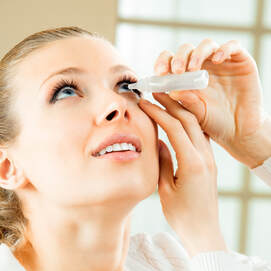It is not clear why some people develop scleroderma. But risk factors have been identified. Risks for scleroderma include the following:
SymptomsSymptoms of scleroderma may vary depending on how many organ systems of the body are involved. In the early stages of the condition, it may only affect the skin. Areas of skin thickening may develop. As the disease progresses, additional symptoms may occur and can include:
Possible eye effectsIn some cases, scleroderma can lead to eye problems, including the following: Dry eyes According to research in the journal Archives of Medical Science, the most common eye complication in people with Scleroderma is dry eyes. Dry eyes occur when you cannot produce enough film of tears to keep the eyes lubricated. Dry eye syndrome may develop due to the condition itself or from medications used to treat scleroderma. Symptoms of dry eye syndrome include:
Increased risk of glaucoma People that have autoimmune disorders, such as scleroderma, are at an increased risk of developing glaucoma. Usually, glaucoma involves a buildup of fluid in the eye, which increases pressure. The increase in pressure can lead to damage to the optic nerve. Symptoms of glaucoma may include the following:
Autoimmune Uveitis Autoimmune uveitis is an inflammation of the middle layer of the eye called the uvea due to an autoimmune disorder. Symptoms of autoimmune uveitis include:
Managing scleroderma eye problemsThere is currently no cure for scleroderma, but there are treatments to ease symptoms, which may also slow the progression of the condition. In addition to treating scleroderma, it is also important to manage eye complications to prevent vision loss or eye discomfort as much as possible. Consider the following recommendations:
Take prescribed medications: Following your scleroderma treatment plan is essential to keep eye symptoms at bay. Scleroderma treatment often includes medication. Different classifications of medications may be prescribed, including immunosuppressants. Drugs that suppress the immune system may decrease the overproduction of collagen and decrease symptoms. Medications that lower blood pressure may also be used to treat scleroderma. Use lubricating eye drops: Eye drops or artificial tears may help improve symptoms of dry eyes. Talk with your doctor about how often you can use lubricating eye drops. Consider special contact lenses: Talk to your doctor about whether you should use contact lenses that are specifically designed for people with dry eyes. The lenses help trap moisture in the eyes. If you have scleroderma, it is vital to work closely with your doctor to develop a treatment plan to manage the condition and decrease eye complications. It is also important to see your eye doctor regularly to have exams. We are happy to answer any questions or to discuss whether an appointment with one of our eye doctors would be appropriate at this time. Please call our office at 508-746-8600. Comments are closed.
|
EYE HEALTH BLOGCategories
All
Archives
July 2024
|
|
Kadrmas Eye Care New England
55 Commerce Way, Plymouth, MA 02360
14 Tobey Road, Wareham, MA 02571 133 Falmouth Road (Rt 28), Mashpee, MA 02649 |
Phone Number:
1-508-746-8600 Hours: Monday through Friday — 8 AM – 4:30 PM |


 RSS Feed
RSS Feed
